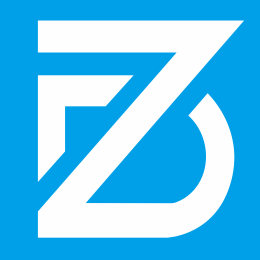Unrivaled Structural Advantages of Steel Bridges
Superior Strength-to-Weight Ratio for Longer Spans
Steel has this amazing property where it's really strong but not too heavy, making it great for building bridges that stretch across big gaps. Engineers love working with steel because they can build lighter structures without sacrificing strength, and that actually cuts down on the money spent for foundations and overall construction. Take the Golden Gate Bridge as proof. That orange monster stands there looking so solid despite being built decades ago, all thanks to steel's ability to hold up against weather, traffic, and whatever else Mother Nature throws at it. Bridges made from steel just seem to last forever without falling apart, which explains why cities keep coming back to steel when they need something that will stand the test of time and still look good doing it.
High Load-Bearing Capacity for Heavy Traffic
Steel bridges stand out because they can carry really heavy weights, something that matters a lot in cities where traffic is packed and constant. Some tests have shown these structures can take on over 1000 tons of weight before showing any signs of strain, which means they hold up well even when subjected to all sorts of forces from moving vehicles. Because of this strength, steel bridges work great in areas with lots of trucks and other heavy machinery passing through regularly, especially along highways and industrial corridors that see nonstop activity. When engineers pick steel for bridge construction, they're basically future-proofing infrastructure against what our roads will face in coming decades as transport needs continue evolving.
Resilience Against Earthquakes and Extreme Weather
Steel has something called ductility, which basically means it bends instead of breaks under stress. This property makes steel bridges much better at handling earthquakes and bad weather than most other materials. When there's an earthquake, these bridges actually flex and move with the ground vibrations rather than cracking apart completely. That's why we see so few bridge collapses during major quakes. The same goes for harsh winter conditions too. Steel structures hold up way better against hurricane force winds and tons of accumulated snow compared to what we might expect from wood or concrete alternatives. Engineering reports keep coming back with similar findings year after year showing steel just handles all sorts of extreme forces better than almost anything else available today. For this reason, cities around the world continue investing heavily in steel-based infrastructure solutions knowing they'll last longer and protect people better through whatever nature throws at them.
Accelerated Construction with Modular Steel Bridge Design
Prefabrication: Precision Manufacturing Offsite
With modular design comes the ability to build steel parts away from the actual construction site, something that really helps maintain good quality control and accurate measurements during manufacturing. The industry has started using some pretty cool tech in how these components get made, cutting down on wasted materials somewhere around 20% or so according to recent reports. Automated systems are making a big difference too. They speed things along because workers can catch problems before they become serious issues, plus there's fewer mistakes when humans aren't doing all the work manually. Beyond just getting things right, this method actually does help the environment as well since we're throwing away less stuff and burning through less power overall. Many contractors now see prefabrication as essential for staying competitive while still being responsible about resource usage.

Streamlined Onsite Assembly Processes
Putting together modular parts makes on-site construction much easier overall. Labor costs go down because workers spend less time putting things together. Faster builds also mean less road closures and detours, something locals really appreciate when bridges get rebuilt. Some studies show these modular approaches can cut down assembly time around 60 percent give or take. Cities love this feature especially since keeping traffic moving remains a top priority in densely populated areas. Getting infrastructure projects done without completely shutting down streets helps everyone stay happy while still getting needed work accomplished.
Reducing Project Timelines by 30-50%
Modular construction methods can actually shorten project timelines by around 30 to 50 percent according to research from the National Institute of Standards and Technology. Cutting time means getting things done faster, which naturally lowers costs across the board, so steel bridges become something companies can afford rather than just dream about. Prefab parts let builders stick to strict schedules without sacrificing what matters most safety standards and build quality. Contractors find this approach really helps them allocate their budgets better too. They hit their targets without breaking the bank, all while keeping those critical aspects intact structural soundness and long term reliability remain top priorities throughout the whole process.
Long-Term Durability in Challenging Environments
Advanced Corrosion-Resistant Coatings
The durability of steel bridges has improved a lot because of better corrosion resistant coatings these days. These special coatings really do make steel bridges last longer while cutting down on costly repairs that would otherwise be needed. Research shows that when engineers use these advanced materials, bridge lifespans can actually double in some cases. Maintenance still matters of course nobody is saying it's unnecessary but those new coatings definitely help fight off the gradual damage from weather and other environmental factors over years of service. They act kind of like armor plating for the structure, protecting it from rust and decay that would normally shorten its useful life.
Weatherproofing for Coastal & Industrial Areas
Bridges built along coastlines or near factories face some serious challenges from the environment. They deal with salt spray, industrial fumes, and relentless exposure to moisture that can eat away at materials over time. That's why engineers turn to specialized steel formulations combined with protective coatings when constructing these structures. These protective treatments can extend the lifespan of a bridge by almost twice as long compared to standard construction methods. Studies looking at bridges in places like harbors or chemical plants have shown just how much difference these extra precautions make against corrosion. The fact that steel bridges stand up so well against tough weather means they work great across different parts of the world, from humid tropical zones to cold northern climates where roads need dependable crossing points year round.
100+ Year Lifespan with Proper Maintenance
Steel bridges stand the test of time when maintained correctly, often lasting well over 100 years and offering tremendous value for money spent. Most state transportation agencies throughout the US recommend regular upkeep to keep these structures going strong. Steel's durability means fewer replacements are needed compared to other materials, which saves both money and headaches down the road. Maintenance crews don't have to constantly patch things up or replace entire sections every few decades. For city planners looking at long term infrastructure solutions, this kind of lifespan makes steel bridges particularly attractive despite higher initial costs. The savings add up over time as communities avoid repeated construction cycles and service interruptions.
Sustainable Infrastructure Solutions
93% Recyclability of Steel Bridge Components
The fact that steel can be recycled so well makes it a smart choice for building bridges, since around 93% of steel parts can actually go back into the system. That number really shows how much steel helps cut down on what ends up in landfills, supporting this whole idea of keeping materials in circulation rather than tossing them away. When builders opt for recycled steel instead of virgin material, they're tackling several environmental issues at once because there's just less need to dig up fresh resources for construction work. Choosing steel isn't just practical from an engineering standpoint either it means creating infrastructure that stands the test of time without draining Earth's finite resources or adding to our growing waste problem.
Reducing Carbon Footprint Through Material Efficiency
Steel bridges actually save resources because they require less material overall, which cuts down on carbon emissions throughout their entire life cycle from construction to demolition. Manufacturers keep finding better ways to produce these structures too, with techniques that waste fewer raw materials while still maintaining strength and durability. Studies indicate steel bridges generate roughly 30% less CO2 than similar concrete alternatives during both production and maintenance phases. When cities choose steel for major crossings, they're making an environmentally smart decision that supports green infrastructure goals without sacrificing structural integrity. Many municipalities now factor this lower carbon profile into their long term planning as part of broader climate action strategies.
Minimal Environmental Disruption During Construction
Steel bridges built with modular components allow construction teams to focus work in specific areas, cutting down on environmental disruption during building phases. With less time spent constructing onsite, there's naturally reduced noise levels and smaller effects on nearby animal homes and plant life. Many environmental protection groups actually back these steel structures because they take up far less space during construction, something that matters a lot when working near protected wetlands or forests. Choosing steel bridges isn't just good for nature though. These designs also mean faster completion times and better long term durability, making them smart choices for communities looking to upgrade infrastructure without causing major ecological headaches.
Cost-Effective Lifecycle Value
Lower Maintenance Costs Compared to Concrete
When it comes to bridge building, steel tends to cost less to maintain than concrete structures do in the long run. Research from various engineering firms points to this economic benefit, mainly because steel just lasts longer without falling apart. Take weather factors for example steel doesn't crack under freeze-thaw cycles like concrete often does, so there's less need for patching and repairs down the road. Looking at numbers over decades shows that what might seem like a bigger upfront expense actually pays off later on, which is why many municipalities now prefer steel when budgeting for roads and crossings. Of course regular checkups and maintenance still matter, but overall steel bridges hold their value much better through time, helping cities stretch their infrastructure dollars further year after year.
Adaptability for Future Expansion Needs
Steel bridges really shine when it comes to being able to change and modify them, something that matters a lot for growing cities and towns. City planners love working with steel because these structures can be expanded or tweaked pretty easily to fit whatever transportation changes come along. Take look at actual cases where old steel bridges got upgraded instead of torn down completely. Those projects usually save money compared to starting fresh with brand new construction. Steel's ability to keep pace with what cities need over time explains why so many planners pick it for their big picture infrastructure plans and budget considerations. Simply put, steel bridges just work better in the long run as neighborhoods grow and traffic patterns shift around.
Proven ROI in Urban and Rural Applications
Steel bridges deliver solid returns on investment in both city centers and out in the countryside according to various research reports and case studies from around the country. When municipalities go with steel instead of other materials, they tend to see better road safety records while at the same time boosting local economies. Cities that invested heavily in steel bridge construction during the last decade reported faster traffic movement and higher home prices nearby these structures. For smaller towns and farming regions, steel bridges stand up to heavy truck traffic year after year, keeping vital supply routes open between farms and markets. Farmers can transport crops without delays, manufacturers maintain steady production schedules, and emergency vehicles reach remote locations quicker. Looking at all these factors together, it becomes clear why steel remains a top choice for bridge building across different parts of the nation despite occasional fluctuations in material costs.
FAQs
Why are steel bridges preferred for longer spans?
Steel bridges are preferred for longer spans due to their superior strength-to-weight ratio, allowing for lighter construction without compromising strength and reducing foundation costs.
How do steel bridges handle heavy traffic loads?
Steel bridges have a high load-bearing capacity that enables them to support heavier loads typical in urban areas, making them suitable for heavy traffic conditions.
Are steel bridges resistant to earthquakes and extreme weather?
Yes, steel bridges are resilient against earthquakes and extreme weather due to their natural ductility, which allows them to absorb and dissipate energy without catastrophic failure.
What is the advantage of modular steel bridge design?
Modular design facilitates offsite prefabrication, ensures precision manufacture, and streamlines onsite assembly, which reduces construction timelines and minimizes traffic disruption.
How long can a steel bridge last with proper maintenance?
With proper maintenance protocols, steel bridges can last over a century, making them a long-term investment that reduces the need for frequent replacements and repairs.
Can steel bridge components be recycled?
Yes, steel bridge components boast a 93% recyclability rate, contributing to sustainability and reducing landfill waste and new material demand.
Table of Contents
- Unrivaled Structural Advantages of Steel Bridges
- Accelerated Construction with Modular Steel Bridge Design
- Long-Term Durability in Challenging Environments
- Sustainable Infrastructure Solutions
- Cost-Effective Lifecycle Value
-
FAQs
- Why are steel bridges preferred for longer spans?
- How do steel bridges handle heavy traffic loads?
- Are steel bridges resistant to earthquakes and extreme weather?
- What is the advantage of modular steel bridge design?
- How long can a steel bridge last with proper maintenance?
- Can steel bridge components be recycled?






